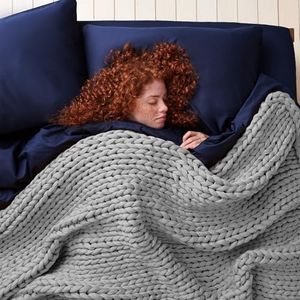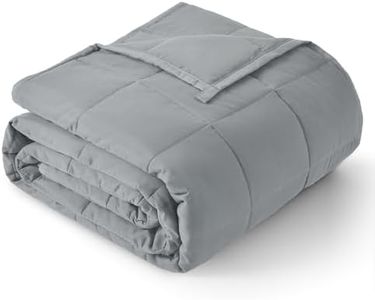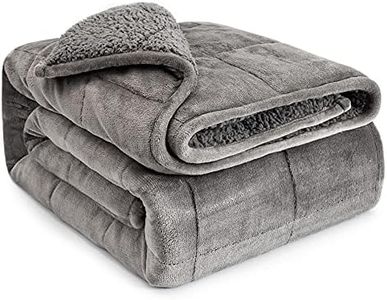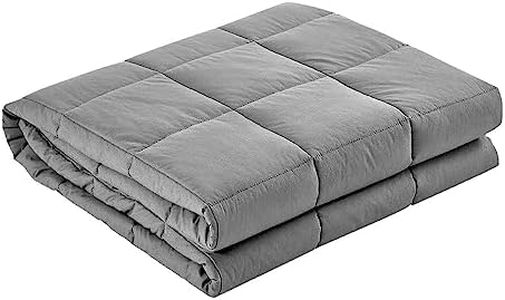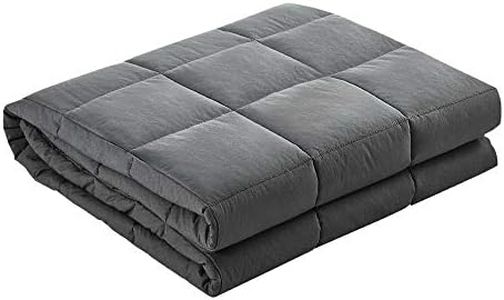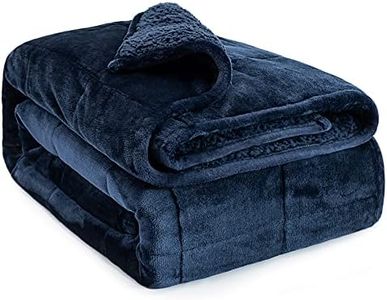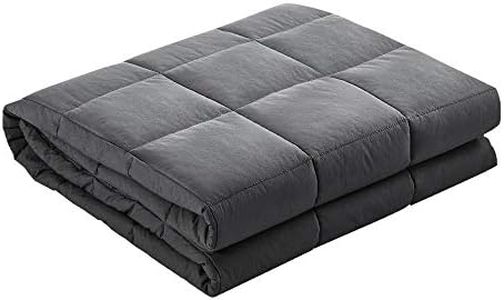We Use CookiesWe use cookies to enhance the security, performance,
functionality and for analytical and promotional activities. By continuing to browse this site you
are agreeing to our privacy policy
10 Best Weighted Blanket
From leading brands and best sellers available on the web.By clicking on a link to a third party's website, log data is shared with that third party.
Buying Guide for the Best Weighted Blanket
Choosing a weighted blanket is all about finding the right balance between comfort, size, and usability to best fit your needs. Weighted blankets use added weight to help provide a comforting and calming effect, which can be especially helpful for sleep or relaxation. To find the ideal one for you, it's important to consider factors such as the total weight, filling material, cover fabric, size, and ease of cleaning. Taking the time to think about how and when you’ll use the blanket will help you make the best choice for your lifestyle.WeightThe weight of a weighted blanket is its central feature because it determines how much gentle pressure will be applied to your body. This pressure can help with relaxation or sleep, but if the blanket is too heavy, it may feel uncomfortable or even restrict movement. Most people are advised to choose a blanket that is about 8–12% of their body weight. As a guideline, lighter blankets (around 5–10 pounds) are best for children or lighter adults, mid-range (10–15 pounds) suits most adults, while heavier options (15 pounds and up) are ideal for those who prefer a firmer touch. To pick the right weight, consider your own body weight and whether you like a gentle or more pronounced pressure.
Filling MaterialFilling material gives the blanket its weight and affects both comfort and feel. Common fillings include glass beads, plastic pellets, or natural grains. Glass beads are tiny and distribute weight evenly, making the blanket less bulky and quieter. Plastic pellets are slightly larger and can make the blanket feel thicker or more textured. Natural grains like rice or millet can add a more organic feel, though they may not last as long. If you’re sensitive to texture or sound, or plan to use the blanket overnight, glass beads may be preferable. For those interested in eco-friendly options, natural grains could be considered, but remember they may require more care.
Cover FabricThe cover fabric determines how the blanket feels against your skin and can influence temperature regulation. Popular fabrics include cotton, microfiber, minky (plush fleece), or bamboo. Cotton is breathable and good for those who tend to get hot, while minky provides a cozy, soft feel perfect for colder weather or people who like extra warmth. Bamboo is silky and cool, ideal for hot climates. Microfiber offers a balance between softness and warmth. Think about your personal temperature preferences, any skin sensitivities, and whether you want the blanket for year-round use or specific seasons when choosing the cover material.
SizeWeighted blankets come in various sizes, from small lap throws to large blankets that cover a queen bed. The right size depends on whether you’ll use the blanket on a bed or while lounging. For personal relaxation or on-the-couch use, smaller throw sizes work well. For sleeping, choose a blanket that fits your mattress, though it's best if it doesn’t overhang (which can cause the weight to slip off). Remember, a blanket that is too large or too small can reduce its calming effect or be inconvenient to manage.
Cleaning and CareWeighted blankets can be bulky and heavy, so cleaning them requires some thought. Some blankets have removable covers that can be machine washed separately, making regular cleaning easy. Others may require spot-cleaning or professional laundering, especially if the entire blanket is large or non-machine-washable. Consider how often you’re likely to want to wash the cover and how convenient the care process needs to be for you. If you have allergies or plan to use the blanket every day, easy-clean features are particularly important.
